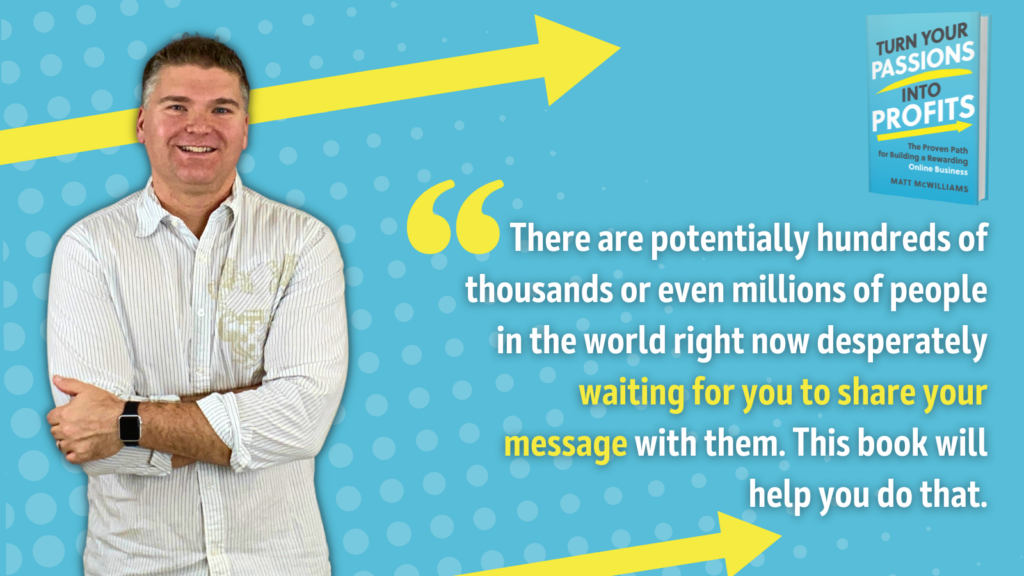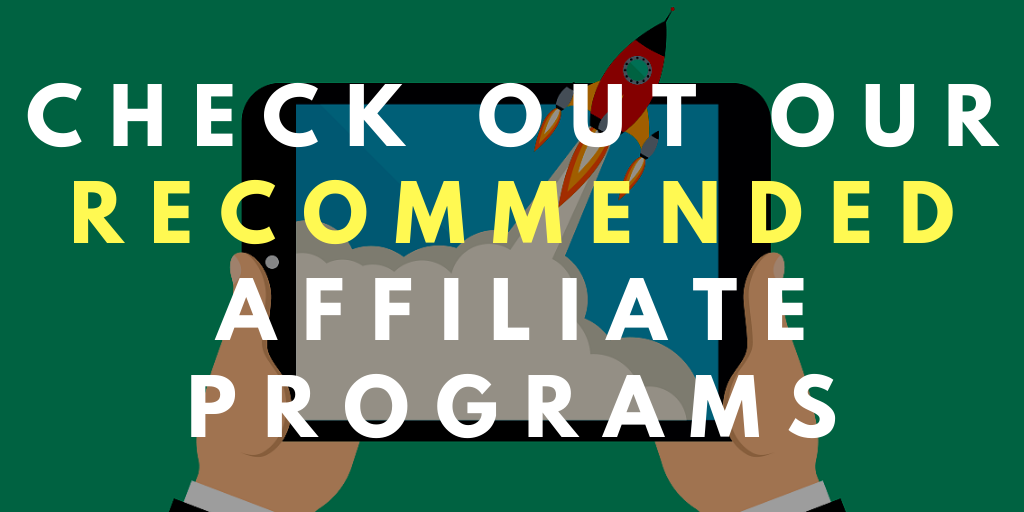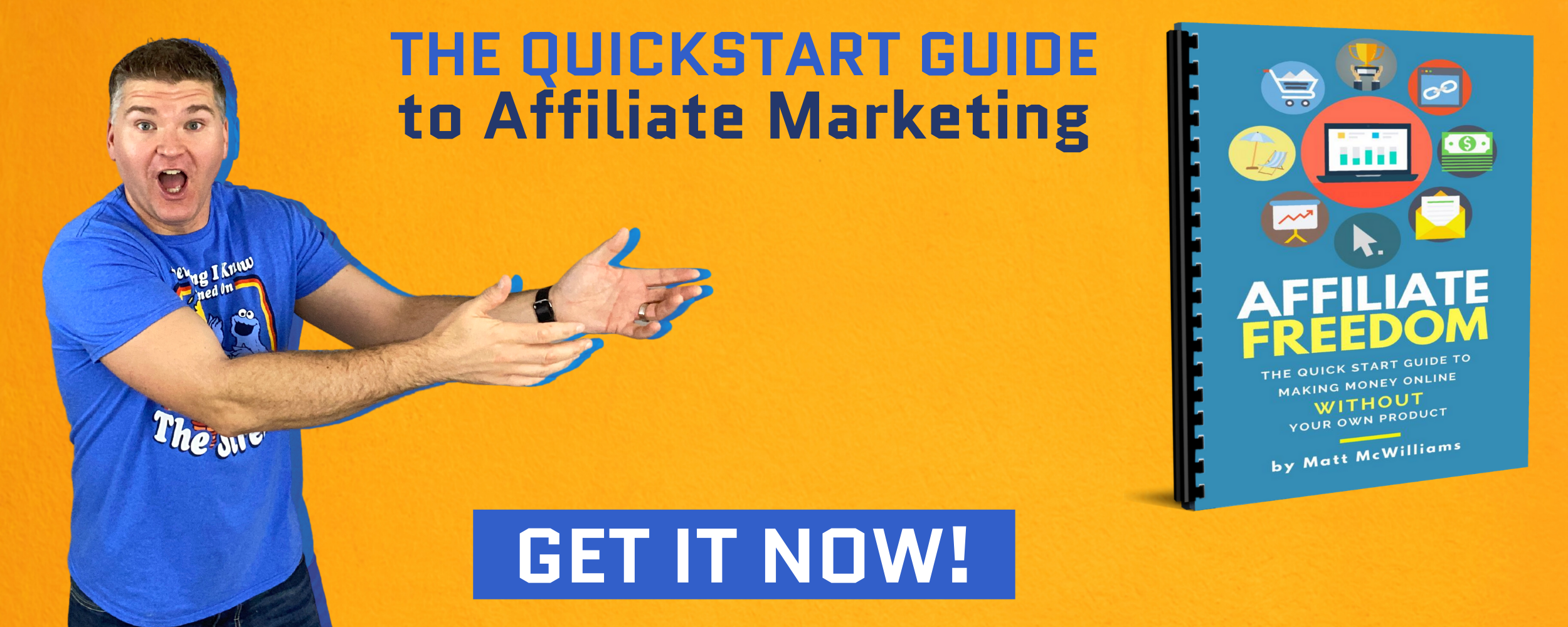Every affiliate promotion has at least one…Someone who finishes in the top 5-7 affiliates and everyone asks the same question: “How in the heck did THAT happen?” It’s easy to think that you have to have a massive email list to get on the leaderboard of your next affiliate promotion. But, in this episode I share what we found by interviewing 15 affiliates who finished in the top 10 or higher in affiliate promotions…with lists a fraction of the size of their competition.
Click Here for The Written Transcript of This Episode
Links Mentioned in this Episode
Turn Your Passions into Profits Book
Text me at 260-217-4619
Don’t Miss An Episode – Subscribe Below
Previous Episodes of The Affiliate Guy
8 Reasons People Fail At Affiliate Marketing
Time Management is Dead: How to Reclaim Your Time and Revolutionize Your Results with Richie Norton
My Best Affiliate Marketing Advice for the Holidays
Affiliate Managers: 10 Things You MUST Do During Holiday Affiliate Promotions
Holiday Affiliate Promotions: 7 Things Every Affiliate Manager Needs to Know
How to Crush Your Black Friday and Cyber Monday Affiliate Promos
How to Outperform Your List Size in Affiliate Promotions: Lessons From 15 Affiliates Who Had Small Lists But Finished High On Affiliate Leaderboards
Every affiliate promotion has at least one someone who finishes in the top five or seven affiliates, and everyone asks the same question how in the heck did that happen?
It’s easy to think that you have to have a massive email list or a huge social media following to get on the leaderboard of your next affiliate promotion.
But in this episode, I share what we found by interviewing 15 affiliates who finished in the top ten or higher in affiliate promotions, but they had lists a fraction of the size of their competition.
There is a dangerous belief that holds people back in affiliate marketing that I want to address today, all right?
This belief that you can’t succeed without a huge list, you can’t succeed without a huge social media following, or if you don’t have massive amounts of traffic, that you just can’t succeed.
That’s what this episode is all about today.
I work with clients. We’ve worked with Michael Hyatt, Ryan Lavesque, Stu McLaren, Shark Tank’s Kevin Harrington, Tony Robbins, Dean Graziosi, Jeff Walker. All of them. Right?
There’s one thing that always happens in these big product launches.
At least one affiliate completely shocks us and performs amazingly well.
Mike Kim, I think Mike Kim years ago defeated Jeff Walker in Ray Edwards launch. He had a list of 50 of the size of Jeff.
Matthew Lewis finished in second place, went toe to toe with some of the biggest names in the online marketing world, finished in second place for Jeff Goin’s had one of the smallest lists of anyone in the top 20, let alone in the top ten.
Like one of my first affiliate promotions, I was the number one affiliate, made more than $10,000 in commissions.
My list was like 1400 people.
It was tiny compared to the rest of the top ten.
Every single time someone shocks us, they vastly outperform their list size, they’re following their traffic levels, and they continually prove a key point.
This is a key point. I write in my book. Turn your passions into profits.
I write, you don’t need a huge following or large list to succeed with affiliate marketing, and you don’t need a huge following or large list to start monetizing and even go full time with your online
business.
In my book, my upcoming book, Turn Your Passions Into Profits, which you can get, by the way at passionsintoprofitsbook.com, tons of pre order bonuses there if you’re depending upon when you’re listening to this, and it’s something I write in the book.
I’m going to read a little excerpt here.
It’s not just the huge success stories I just shared to prove this point.
James Reed, an affiliate for Michael Hyatt in 2015, told me he jumped into the affiliate game blind when he promoted one of our clients a few years back, and I’m quoting him here, I had no list, no following, and zero experience in the online and email marketing game.
But James didn’t let that hold him back.
He followed what we teach and quote.
The next thing you know, he said, I found myself gaining momentum.
Not only did my learning curve fly through the roof, but my list was growing.
And before long, I was getting sales and heartfelt responses.
I was like, what?
And then the bomb dropped.
When the actual affiliate launch ended, I found myself in the top 3% of sales.
How does that happen?
How does that happen?
How does someone and these are his words no experience in online marketing, email marketing, finish better than 97% of all the other affiliates?
How does John Mees he had just started his blog.
He made over $5,000 in one month just from affiliate commissions.
Plus he had a $10,000 product launch of his own.
$15,000 just in 1 month, 1302 subscribers.
I did an in depth interview, and I walked through some of that in the book, where I share more of his story, and it shows how he did it, right?
He shows how he finished near the top of the leaderboard, two different affiliate launches and brought in more than I mean, what does the average American make?
Five and a half month?
He brought in three times what the average American brings in in a month.
With a tiny list, you might be one of those people who are like, oh, I don’t have 1302 people.
I don’t think that’s a small list.
The exact number on the list isn’t important.
What if you only have 200?
Could you make one 6th as much as him?
Yeah.
Use the same strategies that I’m going to share today.
So don’t let your list size hold you back.
I don’t have even 1000. Okay?
Will you make 15,000?
Maybe not.
Will you make 10,000?
Maybe not.
Could you make three or 4000 and get started?
Absolutely.
Ready to turn your passions into a profitable business? Check out my new book here!
So set aside those doubts and listen up.
Today you’re going to learn a lot that you can use regardless of your list size.
So first, I’m going to share six mindset shifts that you have to make, followed by six strategies.
Success.
We talked about this in the last episode, begins in your mind.
If you want to truly succeed with a smaller list, you need to make these mindset shifts first.
And like I said, I go in really in depth in this in the book.
Turn your passions into profits again, passionsintotheprofitsbook.com.
You’re going to hear me talk a lot about it over the next few months.
Sorry.
Not sorry.
Not sorry.
But I’m going to give you the detailed but condensed version here.
So mindset shift number one.
Stop comparing yourself to others.
If you constantly compare yourself to those who have bigger lists and think success is impossible. It’s not going to be.
Whether you think you can or you think you can’t you’re right. Henry Ford said, right?
That first affiliate launch I ever did, Michael Hyatt’s Five days, your best you ever. I made $588.
I didn’t even sniff the leaderboard. I had 400 people on my list though.
But that first promotion showed me what was possible.
Fast forward a year later. I only had about 1400, but I made more than $14,000. Finished in fifth place.
I had some of the biggest names in the industry.
Following year I made almost $20,000. Finished in fourth place.
And then finally a couple of years ago.
So I ran his program for a couple of years.
Then I was an affiliate again.
I placed in the top three and I got the grand prize.
I got to spend a week with him and Jeff Walker and Amy Porterfield, meaning him meeting Michael at a place called BlackBerry Farm.
Look it up. It’s the most amazing place on earth.
And these successes though, they started by removing comparisons and focusing on what I could do to succeed.
The second mindset shift you got to make is you got to nurture your list.
This is a mindset thing, okay, we’re going to talk about strategy later.
But when you have a huge list, you can succeed without a lot of effort or planning.
Like if you have 3000 people on your list, it doesn’t take any effort to generate 100 sales.
You’re going to get 100 sales.
You just send out a few emails, you’re done, big deal.
But with a smaller list, you have to be more strategic.
You have to nurture your list.
So you do this by treating an affiliate promotion like your own promotion.
So that means you’re going to warm your audience up.
You’re going to blog about it.
You’re going to record episodes in advance.
You’re going to warm your audience up and warm the list up.
Building an early interest list.
Plant those seeds early. Right?
Mindset shift number three is do your own thing.
I am a huge believer.
You’ve heard me say so many times, the quote from Pablo Picasso that I’m taking credit for good artists copy, great artists steal.
I love that quote. Yeah.
Copy what others are doing.
Model what others do.
We have our own swipe file of other emails from entrepreneurs that I respect.
We watch what they’re doing on social media.
We watch what they’re doing on the podcast.
But modeling and stealing has its downsides.
What works for big lists doesn’t always work for smaller lists.
When you have a small list, you have to be very careful what you copy from those who have larger lists, right?
Your small list is more intimate and you can use that to your advantage.
Use that to your advantage.
We talked about this a few episodes ago.
Use your smallness to your advantage.
And more importantly, do your own thing.
Do what works for your audience, not what you see some other Internet marketer doing.
One of the most important skills of any marketer, especially for those who’ve got smaller lists, is trying new things, testing different tactics, testing different strategies and techniques.
Now, when you have a small list, you can take tactics, and you can take ideas from others and try them until you find the ones that fit your style, your audience, your industry.
All right?
So just do your own thing here.
Mindset shift number four realize something is better than nothing.
Making some sales is better than no sales.
We have an old saying in our company, zero doesn’t scale.
Well, I can’t tweak zero.
I can’t optimize zero.
I can’t split test zero.
But too many people think they have to make enough money to go full time right away.
Like, I’ve been at this for three weeks.
I should be able to go full time.
No, I should be able to make six figures.
No, not that quick.
Talk about this, the last episode, right?
Patience, right?
Embrace progress, not perfection.
Embrace improvement over expectations.
If you make $50 this month, that is infinitely better.
How much better is 50 than zero?
Infinite one is infinitely better than zero.
If you make $200 this month, make $300 next month.
That’s not $100 a month.
That’s not a huge leap.
But it’s 50% growth month over month.
Big companies would kill for 50% growth.
They’d kill for 5% growth.
So do this when you make anything.
I showed this in the last episode.
Celebrate.
I don’t care if you make $200 and you take ten of it and you go to a coffee shop with your spouse or a friend or whatever.
I don’t care if you just do something to celebrate it, even if it’s just that you have a little dance party.
We did this one time, and the kids and I, we just we had a little, like, ten minute dance party, like, boom.
To celebrate something.
We bought a company recently.
I’ll talk more about that soon.
We bought a company.
We’re getting into the software business, making websites, and we bought a company recently, and, you know, we celebrated the firehouse subs.
You didn’t have to be anything special.
It’s not like $40 on dinner or whatever.
$35 doesn’t have to be something monumental.
Action for us.
But celebrate.
Celebrate.
Find a way to celebrate.
Even the small wins.
The fifth mental shift you’ve got to make is just not being afraid to sell.
Like most people when I started out selling in affiliate stuff, whatever it was, I sucked because I was selling scared.
That is the number one reason most people suck at selling anything they sell. Scared, really?
What are you scared of, right?
Scared of looking ridiculous?
Scared of being rejected?
Maybe you’re scared of losing subscribers.
Maybe somebody won’t like you scared of a little two letter word that begins with N and ends with O.
You’re scared, right?
When you sell scared, people instinctively know it.
Dogs can sense fear.
Prospective customers know when you are selling scared.
It comes through in person.
It comes through on the phone.
It comes through an email.
It comes through in the way that you look at people.
It comes through in your posture.
It comes through in your voice, but it comes through in the words that you choose.
And so in this, like, metaphorical, but also literal sense, you’re transferring your fears onto the potential customer.
Nobody wants that.
Nobody wants your fear.
It feels weak.
It feels slimy, scary.
Fear is scary, right?
Nobody wants to buy from someone who’s afraid to sell.
So how do you overcome this fear of selling?
I’m going to get a little bit off my track here when I was planning on doing but I think it’s important to talk about this, not just be like, hey, get over your fear selling.
All right, thanks.
I mean, number one thing you got to do, you have to have belief in the product.
Ask yourself, would I sell this product to my best friend, to your mother, if it was actually relevant?
Like, no, I would not sell Jeff Walker’s product launch formula to my mom.
She’s not going to launch a product anytime soon.
She’s retired, so I would not sell it to her.
But if it were a valid product for her, if she was planning on launching a product when I sell that course, absolutely.
I would sell it to you in a heartbeat.
If the answer is no, don’t try to sell it to anyone, period.
When you wholeheartedly, like, everything in you, you believe in the product or service, whether it’s yours, somebody else, it doesn’t matter.
You’re going to sell with authority.
You’re going to sell with authority.
That was number one.
Number two, you got to ignore the worst case scenario.
It’s just so common.
Like, we think about what’s the worst thing that could happen if we sell?
Like, we’re going to get embarrassed.
We’re going to get rejected.
People are unsubscribed if you think about that.
You don’t do that in any other aspect of life unless you’ve got, like, extreme phobias.
And I’m not talking about that.
Nobody focuses on the worst case scenario.
Don’t get in the, hey, honey, I’m going to the store.
Worst cases, I’ll die on the way in a car crash.
Like, nobody does that.
Wife told me the other day like, hey, you want to go to this restaurant?
I’m like, yeah, sounds good.
Worst cases, we’ll get food poisoning.
That’s ridiculous.
Looking for some good affiliate programs to promote? Check out our recommended affiliate programs here!
Nobody does that in any other part of life.
So ignore the worst case scenario.
It’s likely never going to happen.
So why would you focus on it?
The third thing, and I touched on this earlier, you got to go all out.
You got to go all out.
I share this also in more indepth a few episodes ago, go all out, and we’ll talk about that in a little bit here.
Like, sell with confidence.
Don’t be afraid to get in people’s faces a little bit if needed.
That’s going to be when we talk about the strategies.
That strategy number one is go all in, go all out.
It’s weird that mean the same thing.
Go all in and go all out.
That’s kind of weird.
And then lastly, stop using weak phrases and words.
Don’t use words like I hope or try.
What does it do or do not.
There is no try, right?
If you like, or maybe, probably, don’t use words.
Don’t sell in the hopes of someone buying.
Sell with the expectation that they will.
That is the key.
If you’re going to sell something, you’ve got to sell with the expectation that they’re going to buy.
And that single mindset shift makes all the difference.
You get nothing else out of this episode.
Sell with the expectation that they will buy.
Don’t ask your audience to try something.
Ask them to make a commitment to buying.
Try is such a weak word.
Don’t ask them to check it out if you’d like.
No, you encourage them to urge them to get it.
Now, use encouraging action words when you sell.
So with authority, so with confidence.
So because you have to tell the world about what you’re selling because the product is so good.
Remember what I said, you believe in it.
You believe in it.
So the mental shift there, don’t be afraid to sell is so important.
And then the last mental shift is you got to take advantage of being small.
You got to take advantage of being small.
I touched on this earlier, right?
Most people think that when they’re new, they’re small, they’re unknown.
It’s a disadvantage if you’re promoting affiliate offers.
Now, don’t get me wrong, if I had the choice seven years ago between being obscure and having 200 people on my email list or being well known with 200,000, I’d have to pick the second thing.
But there’s actually a bunch of advantages.
I want to highlight three here.
There are three big advantages when you’re small.
Getting an early start, right?
I say it so often, start doing affiliate marketing right away.
And the first advantage is you get to practice with your best people.
You know, if you think about it, your first few hundred people, your 1st, 100 to 300 people, they are a homogeneous group of people.
They probably mostly look the same, talk the same, they have the same career, they’re a tightknit community.
You probably start to get to know them by name.
And what better group of people to practice on than those who aren’t going to hold it against you if you do something stupid or crazy, if you screw up, if you send a bad email, if you try something and it doesn’t work.
So you get to practice with your best people.
Everything is an experiment.
That’s number two.
The smaller your subscriber base is, the easier it is to try new stuff.
I’m going to tell you right now, the bigger that we’ve gotten, the more resistant to try new stuff.
I am like, this is going to affect tens of thousands of people.
I don’t know if I want to try it.
But early on, you get to test out things like email frequency, and when you send emails, test out crazy subject lines, style of emails, different products, different offers, different bonuses, different close
methods, different social media campaigns, everything you need to test all these things.
Anything you can think of, you get to test.
Everything is an experiment.
Everything is and then the third thing that ties those two together is your mistakes are small.
You’re going to pick a bad product, you’re going to screw up the promotion, you’re going to try some bonuses that are like terrible.
You’re going to make mistake after mistake.
But the more you do this, like anything, the better you’ll get at it.
When you first start promoting affiliate offers, here’s a newsflash you’re going to suck at it.
You’re going to suck at it just like the first time you hit a golf ball.
You’re going to suck at it.
The first time you go ice skating, you’re probably going to fall and bust your b***.
But I would rather make the majority of my mistakes in obscurity than when I’m in the spotlight.
Regardless of whether you’re brand new to building your platform, you’ve been around for a while.
If you aren’t promoting affiliate offers, now is the time to start.
The old Chinese proverb best time to plant a tree is 20 years ago.
The second best time is now.
The best time to start was when you started your platform.
But now is the second best time.
So you got 50 subscribers.
Start now.
Oh, you have a thousand start now.
5000 Start now.
You’ve been blogging for two weeks.
Pick something, promote it, go at it with all your might.
Like right now.
Just do it right now.
In fact, stop playing this episode.
Press pause, just go promote something.
Now you can finish the episode and get the strategy.
If I’m saying do it today.
Today.
All right, so that’s the mindset stuff from a strategy side.
From a strategy side, strategy number one.
We touched on this earlier.
Go all in.
Go all in.
The affiliates who outperform their list size go all in on their promotions.
So what does it mean to go all in?
Matthew Lewis is one of the people we studied.
It meant that he sent 21 emails about the Tribe Riders launch in 17 days.
21 emails, that’s a lot.
And he did it without any backlash from his subscribers.
He had no increase.
He said he had no dramatic increase in unsubscribe, no hate mail, no spam complaints.
So don’t worry about unsubscribes.
When you’re promoting a product you believe in, don’t worry about unsubscribes.
I had tested this for months.
I found there is virtually no increase in unsubscribed to my regular emails.
And when I go all in promoting an affiliate offer, I mean, if I send ten emails about blog posts, ten emails about podcast episodes, I’ll get 100 unsubscribed from those 20 emails.
If I send 20 emails promoting an affiliate offer, I basically will get about 100 unsubscribes.
It might be like 102, a whole 2% increase.
Big deal.
I mean, I sent ten emails in one day once in an affiliate promotion.
I’m not recommending you to do that.
I’m just saying I did ten emails in one day, had one unsubscribed the entire day, one unsubscribed that time, I don’t know what list was, maybe 10,000 people, 50, 00, 10,000 people got one
unsubscribed.
It’s not going to make a monumental difference to my company.
So don’t worry about those unsubscribed.
Go all in.
Number two, strategy number two, you got to segment your list.
When you promote affiliate offers, I want you to focus on those who are most interested in the topics you’re promoting and be aggressive in your marketing with them.
Okay?
So you segment based on interest, then you promote aggressively to that segment.
I mentioned Matthew Lewis.
He said, he said one emails, promotional emails in 17 days.
That seems like a lot, right?
But he didn’t send all 21 emails to everyone on this list because he segmented his list.
Because of that, none of his subscribers received anywhere near 21 emails.
He shared this, in this case study, basically every new phase of the launch.
So there were Jeff had an e book.
This is Jeff Goin’s launch.
Jeff had an ebook, a video series, a webinar, and then open Cart.
He would email his entire list.
And then after that, he would resend that email to just the people that did not open the first one.
So basically double the number of people he saw his emails throughout the launch.
Like, that’s the easiest way.
We’re there just sending to the unopened, the nonclicks.
He mentioned he was super selective, something we teach about who he sent the emails to once the card opened.
So once the focus shifted to sales, his focus shifted.
He was super selective.
So prior to card opening, he was promoting Jeff’s prelaunch content.
The free stuff.
Plc is what’s called prelaunch content, right?
So he would send more emails about that, and he would get them to go to the free content once the card opened.
He focused all of his promotional efforts only on highly engaged contacts.
So the people who opted in to the free content, the people who clicked on certain emails, and then buyers of his own products.
So this way he was able to increase not only his optins, but his sales.
And he didn’t like, upset anybody and had a really, really low unsubscriber.
He actually said it was lower than his typical unsubscribe rate.
So one of my favorite tips is actually strategy number three.
This comes from John Meese.
Remember, your audience follows you.
Your audience follows you, not the person you’re promoting.
They signed up for your list.
They follow you on social media.
They want content from you.
They know, like and trust you.
So during Ray Edwards launch, John, he created a three part video series promoting Ray’s launch.
And so he actually created we call it Copywriting 101.
It was hugely popular with his audience and actually allowed him to be the star of the show.
Now, took some extra effort, but he used that series to lead into like, hey, if you got value out of this, this short maybe 30 minutes series, then your next step is to go to Ray’s workshop.
Here’s the link for that.
And then they went to Ray’s more in depth workshop, and eventually some of them bought Ray’s course.
Strategy number four.
Hustle wins.
Hustle freaking wins.
The number one reason why all 15 affiliates succeeded, all 15 affiliates that we interviewed was Hustle.
They went above and beyond the norm.
John created his own video series, matthew segment, and his list.
They all talked about getting personal with their audience, DMing, sending individual messages, one on one messages, getting on the phone with people, things like that.
To close sales like Hustle is one of the biggest reasons why I’ve succeeded in the past.
With a small list, I make sure to answer every email, every email, and I would close like half the people who contacted me, every
Tweet, live chats, phone calls, you name it.
Like, it takes a lot of effort, but they are absolutely worth it.
That’s how you win.
That’s how you succeed.
Even if you get a tiny list and you go like, really?
Not phone calls.
Phone calls.
Like, I’m not getting on the phone with people.
I’m not going to DM people.
That’s not worth my time.
When you’re first starting off, it probably is.
I’m going to tell you right now, promoting a $2,000 course.
Like I think about Stumclaren’s tribe course.
Back in the day, I was one of the top affiliates with a tiny list, and I made $798.80 a sale.
So $800 a sale, I would get on phone calls and I would talk maybe to five people in an hour.
So ten people in the course of 2 hours, I would close half of them.
I close five of them.
I make $4,000 in 2 hours.
Now, this is a while ago.
I did not make $4,000 in 2 hours.
I did not make $2,000 an hour.
If you make $2,000 an hour, don’t do this strategy.
Why are you even listening?
If you make more than that per hour, and I’m not talking about like the occasional coaching call.
I make more than that in an hour of a coaching call, but I’m talking about just every day in my business, I do not make $2,000 an hour.
So when the opportunity presents itself to make $2,000 in an hour, I take advantage of it.
I get on the phone with people, I DM with people and make a lot of money.
It’s worth it.
I’m going to tell you that right now.
All right, strategy number five, mail your non clicks.
All right, so in your email, when you send an initial email out, this is huge.
You send an initial email and you’re promoting something.
What I would put in a language that says, here’s the link.
Let’s just say you’re promoting you’re selling a course.
Hey, go buy the course.
By the way, if you’re not interested in buying the course, you have no interest in this.
Click here and I won’t send you any more emails about it. Right?
To get started with affiliate marketing the right way, download my free quickstart guide to affiliate marketing. Grab your copy here!
So they have two options to basically either tell you they’re either interested or not interested.
If they don’t click either of those emails, then we’re going to email them again a little bit different message, but basically we’re sending to nonclicks.
And so it allows us to get more eyeballs on it.
The number of people this will hit, you’ll basically double your click through rates.
And the thing is, nobody, practically not I shouldn’t say nobody, almost nobody is doing this.
Almost no one is doing it.
It used to be that you can mail to your unopened, and there is still some validity to that, but it’s gotten less and less accurate because, like, the new iOS, I believe, doesn’t track open rates.
So it would count me if I open it on my phone.
I think it counts as an unopened.
Now, I’m not sure about that, but if you mailed to non clicks, then you’re going to get more traffic.
So a day or two later, mail to the people that didn’t click, try a little bit of a different message.
Try shorter or longer or some sort of a different angle on that.
And then the 6th strategy, it’s a bonus strategy that I learned a little trick from Matthew Loomis during the Tribe Riders launch.
This was like, I’ve not seen anybody else do this.
So instead of having just a single bonus package, matthew had several micro bonus packages that he rolled out at several different times during the launch.
The cool thing about this, it created multiple deadlines.
So five day open cart, sometimes you might have a seven day open cart and you’ll have a big rush on day one.
We all know like 40, 50% of your shows are going to happen on the last day and 40% on the first day.
That middle 4345 days is so slow and there’s no sale.
So he’s like creating a deadline every 36 hours.
And so he would offer bonuses.
They expired at different times.
Some of them.
They were only good from like 10:00 A.m. To 05:00 p.m..
Some of them expired in the morning, some lasted like a day and a half, some lasted four or 5 hours.
And the variety was the key.
The variety was the key.
And it was like, it was so cool because people didn’t know and they would look and they go, oh, that’s the thing, that’s the thing I want.
And then of course, if you bought before that, you got everything, just to be clear.
But he would create these micro bonuses that really move the needle.
And so what happened with him was instead of, yep, I know there’s going to be a big push at the end, he kept having day three of the launch.
I think it was a seven day open cart with Jeff.
He had a big day one and he was like in fourth place.
And then he had a really good day three, moved up to third place, then like an OK.
Day four was like a little bit closer to second.
By day five, he moved up to second place and he almost pulled off the win at the end.
We had another affiliate who just killed at the end.
Matthew was actually in first going into the last day.
But these little micro bonuses, instead of having that huge beginning, followed by a complete valley and then a huge peak at the end, looked a bit more like, what do you call this?
Like an EKG throughout the launch.
And so it worked.
It worked.
Again, the variety was the key.
So you can learn a lot from these affiliates who vastly outperform their list size regardless you have 100,000 10,000, 100,000 people on your list.
These strategies will help you increase your affiliate commission.
So I mentioned my book earlier, turn Your passions into Profits.
Go check that out at passions in Theoprofitsbook.com.
And if you’re looking for a good affiliate promotion, you can join my book launch team as an affiliate@passionsinthrofitsbook.com LaunchTeam.
Both those links will be in the show notes.
If you’ve got questions about the book, launch the book, or anything I’ve shared today, any of this information, you know, the Six Mindset shifts, the six strategies, anything at all affiliate marketing related, you can text me anytime at 260-217-4619.
And make sure you hit subscribe so you don’t miss the next episode.
Next episode, I’m going to be sharing speaking of the book, I’m going to be sharing an excerpt from that and some really cool information that I know you guys are going to love.
The proven path for building a rewarding online business.
If you’ve ever wondered what would it be like to build that kind of business, the next episode is going to get you started on the right track.
So we’re going to show you how to take your idea, your message, your passion, and turn it into profits in the next episode.
So come join us for that.
Make sure you hit subscribe so you don’t miss it.
I’ll see you then.
Thank you so much for listening today.
Remember to check out all of our deep dives into affiliatemarketing at theaffiliateguide TV, and if you have a question, ask it at asktheaffiliate Guide.com.
Who knows, maybe you’ll even be featured on an upcoming episode.
And lastly, if you haven’t yet, make sure to leave a rating and review wherever you’re listening into this episode.
See you soon.
Questions?
Text me anytime at (260) 217-4619.
Or…check out some of my free reports to help you get on the right track:
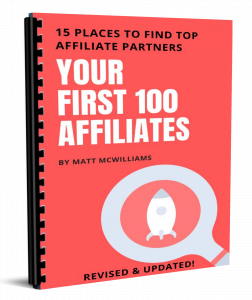 |
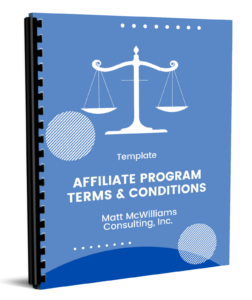 |
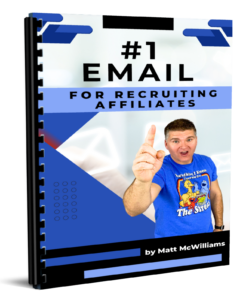 |
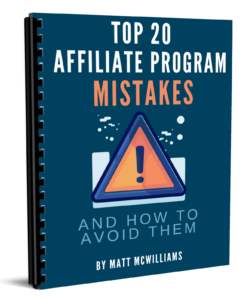 |
 |
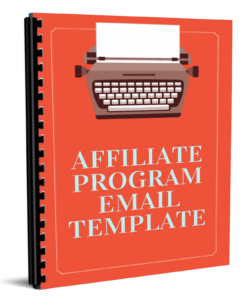 |
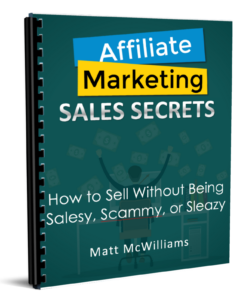 |
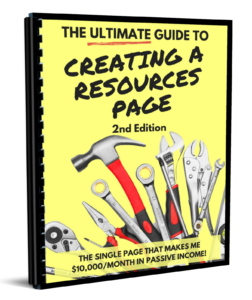 |
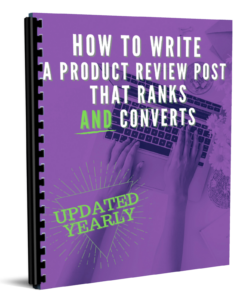 |

